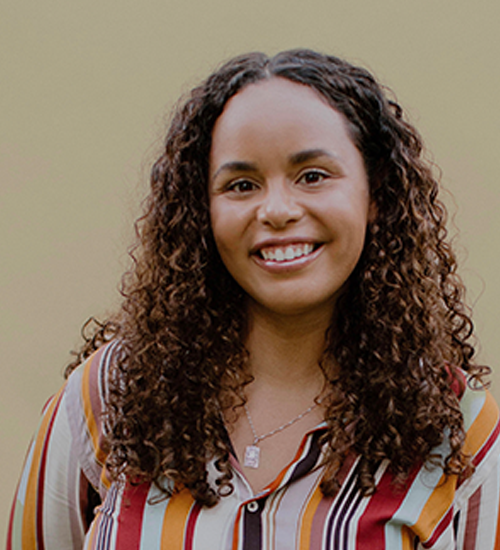Equitable workplaces
CONVERSATIONS WITH BUSINESS EXPERTS

(J.M.) WHY DO WE NEED EQUITABLE WORKPLACES?
(J.R.) We spend the majority of our time at work. So, to quote my Bloom colleague Vinciane De Pape, “work is where we spend so much of our time….for many people, the workplace is where there is the greatest confluence of diversity, and the greatest opportunity to create meaningful connections across differences. There is also, unfortunately, opportunity to cause harm due to unconscious bias, ignorance, discrimination, and worse.” We also come with unconscious biases, and since our work environment is where we mix together, it’s important to create a safe, equitable place where everyone can feel respected.
As a society we’ve been trained to be polite, especially as Canadians, where our ‘niceness’ can make it hard to have difficult conversations. Inherently we don’t want to be offensive, but when it comes to having difficult or vulnerable conversations about being more inclusive or eliminating discriminatory attitudes or policies in our workplaces, it’s easy to be apprehensive or avoid them altogether. But we need to be able to have these difficult conversations in order to open ourselves to learn and better understand each other to create an equal and inclusive working environment.
WHAT DOES DIVERSITY, EQUITY, AND INCLUSION MEAN IN A WORKPLACE?
Building diversity, equity, and inclusion (DEI) in a workplace is the foundation for equitable workplaces where employees can feel safe and respected. It can also foster greater employee engagement and satisfaction. In the past, diversity, equity, and inclusion was a part of the work human resources perform. Traditionally some of this work was considered to just be for human resources, but real DEI work has to have buy in from the leadership level and down, not just human resources. And by focusing and being intentional about DEI we can create more equitable environments. And as workplace cultures evolve and we recognize everyone’s diverse experiences, everyone will benefit.
Diversity is the collective of differences and similarities that includes individual and organizational characteristics, values, beliefs, experiences, backgrounds, and behaviours.
Equity is different from equality. Equality means everyone is given access to the same opportunities, while equity means that there’s proportional representation in those same opportunities. This means that recognizing that “fair opportunity” is not the same for everyone.
Inclusion requires active, intentional, and ongoing efforts to promote the full participation and sense of belonging of every employee, customer, and strategic partner. It involves policies and practices, but also the ability to envision and enact new ways of leading.
HOW CAN FARM EMPLOYERS FOSTER DEI IN THEIR WORKPLACE?
Everyone is responsible for a safe and inclusive workplace, but building these values starts at the top with leadership. A leader needs to make a conscious effort to make inclusive spaces and set an example. All workplaces are different, but the best place for leaders to start is by taking a personal and workplace inventory of your knowledge and understanding. Start by acknowledging your own vulnerabilities or things you are uncomfortable with and take a snapshot of your work culture. It’s easier to know where you need to go, or grow, by knowing where you are starting from. As a leader you also need to be committed to fostering a culture of grace and growth for yourself and your employees. Start by learning more about other people’s experiences, whether they be cultural, racial, or gendered. This can help you gain understanding and empathy towards others, and ultimately foster an environment where you can have open and meaningful conversations about these differences.
Some environments can have the potential to create bias in workplaces that are enmeshed with family business, as many farms are. That bias can create inequalities. As an employer, ask yourself what are you doing to remove or mitigate any biases around these situations. Its crucial to recognize that people often have invisible parts of their identities that you may not perceive. Its possible someone could present to you as male but they identify as non-binary and their pronouns are they/them, but without making DEI a part of the conversation, we may continue to misgender them. A great example is an environment where male employees may not feel comfortable asking for parental leave or time off to care for their children, if this is the case in your workplace, ask yourself what you can do as a leader to remove this bias. l
WHAT ARE THE CHALLENGES OF INCORPORATING DIVERSITY, EQUITY AND INCLUSION INTO A WORKPLACE?
As a DEI advisor, I often see these five common challenges:
Misinformation of what diversity, equity and inclusion is and what it means in the workplace. For some folks, when they hear DEI, they could feel fear or uncertainty as they may think the conversation is supposed to be just critical. When really, DEI done well should be based on learning not shame.
It’s too much work. It’s a lot of work, but that doesn’t mean it isn’t valuable and meaningful work. The amount of time and energy put into this work makes people feel safer and included at work.
There’s no one-size-fits-all approach. Changing different systems require different solutions. DEI can be a complex process, but there are places employers can find support and help.
The process isn’t destination based. When it comes to DEI work the goal post is always moving, because we are always learning new things and different best practices. That means a large part of the work is recognizing that DEI means making a commitment to the process and the goal, not just the goal. making it important that everyone in the workplace take responsibility to learn and grow together.
Lack of leadership buy in. If leaders aren’t invested or don’t value DEI it’s hard for a workplace environment to change and grow.
For more information visit:
• www.ontario.ca/page/employer-resource-hub-workplaces-work-all
• www.buildwithbloom.com











